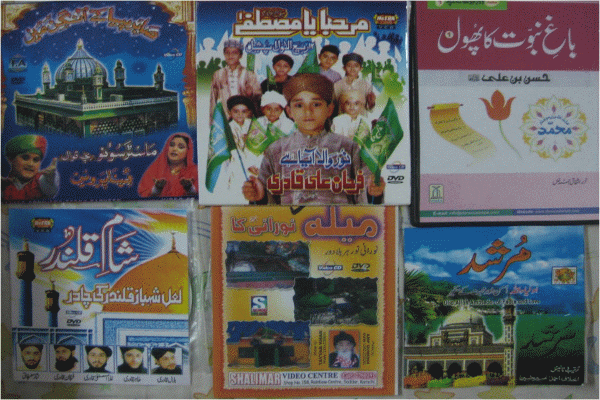
Mediating Belief and Senses: Dawat-e-Islami's Emerging Madina of Visuality
Noman Baig
This project seeks to explore emerging visual culture and the ways it is mediated in urban spaces in Pakistan. It focuses on new techniques and practices that are used to circulate visual imagery of Islam among the population, with particular focus on sufi

However, in recent years, despite its historical aversion to technology, DI has emerged as an organization embracing all forms of modern technology, making themselves and their services available to a global audience. For example, DI even has it's own TV channel, which often features kalam performed from shrines. The DI's well-planned website offers many services from the live TV channel, to online chat rooms/forums, and wallpaper downloads. The glittering wallpapers available for download, feature shrines and are providing a new routinized visual experience of Pakistan's shrines, collapsing spatial distance and lending a sort of 'everydayness' to the shrines. Also, if one is willing to be a mureed or DI devotee then he/she could do that by simply filling out an online form. Many of DI's associated Naat khawan or singers also maintain their own webpages and are connected to social networking websites such as Facebook and Youtube. The CDs and DVDs of naat and sermons are produced in abundance and circulate in bazaars and marketplaces. Ethnographically, one could investigate individual sensual experiences, produced and intensified through these emergent audio/visual techniques, and the ways a sensorium is mediated with built spaces, in this instance, shrines. When one views existence in terms of mediation it becomes difficult to understand where the shrine begins and ends and where the subject begins. I argue that it is not the shrine as a physical space that expresses what a Pakistani thinks or feels about the shrine or the other way round. Rather, the relationship between people and shrines is mediated mediated and enhanced by the aesthetically appealing visuality of Dawat-e-Islami and it's shrine-focused media. The Dawat-e-Islami is an apt entry point for discussing the mediation of people and shrines because of its recent and rapid embracing of every media available, making itself a transnational channel of Islamic imagery (even though it has been historically opposed to all form of modern technology). Empirically, it is the Barelvi organizations such as the Dawat-e-Islami that are experimenting with the productions and circulation of visual imagery of shrines in Pakistan.
 Tasveer Ghar: A Digital Archive of South Asian Popular Visual Culture
Tasveer Ghar: A Digital Archive of South Asian Popular Visual Culture